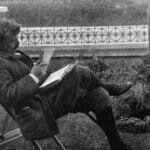A review of The Myth of the Perfect Person. Edited by Kath Woolf.
Australian Federation of Right to Life Associations, 2003.
Recent developments in medical technology, the increasing secularization of society, and the return of eugenics have combined to promote the notion of the perfect baby and the perfect person. In a society that expects perfection, and is uncomfortable with anything less, the pressure is on to only allow “perfect” babies into the world, and to only allow “perfect” humans to continue in the world.
No longer the results of nature, or divine providence, babies now are seen more as commodities that can be ordered complete with special features. Designer babies have become just as common as designer jeans.
Moreover, while we give greater recognition to the disabled amongst us, the quest for perfection has made the very concept of disability even harder to accept. And increasingly we let doctors decide who should live and who should die, at both ends of life. The quality-control mindset enters our decisions concerning end-of life care. Thus the phrase “quality of life” is often used when we in fact are speaking of bumping off elderly people.
While we all want to have babies who are healthy and well, and while no one celebrates illness and disease, there is a dark side to this quest for the perfect person. This collection of essays from a September 2001 Australian Federation of Right to Life Associations conference in Canberra incisively and intelligently deals with this issue.
The first article, by Mary Joseph, ACT Secretary of the Right to Life Association, looks at the current legal standing of the unborn in Australia. She notes how our legal understanding differs markedly from our medical understanding.
Increasingly our medical position takes into account the right of the foetus as a patient. For example, advances in live-saving foetal surgery indicate how doctors are involved with the unborn as patients from the earliest stages of life.
Yet our legal system takes a much different approach, in rendering the unborn invisible. Joseph notes how the unborn child “does possess certain rights to seek a remedy for pre-natal injury, but in a Catch-22 situation, the exercise of those rights is contingent upon achieving birth, which the courts have refused to recognise as a right of the unborn child.”
Some state laws do recognise the crime of killing an unborn child, but often it is acknowledged only late in pregnancy. Thus major changes to the legal position on the unborn are clearly in order.
Anna Duffy Krohn, then of the Southern Cross Bioethics Institute, looks at the brave new world implications of the perfect person myth on parents and families. She argues that while we do not yet have the state-run baby factories that Huxley imagined, we are heading in that direction. The pressures come from consumerism and the idea of perfection so rampant in modern Western cultures. The idea of the perfectibility of man and the over-riding emphasis on choice have put tremendous pressure on families to be much more restrictive on what is considered “normal” and much more selective as to who should live and who should die.
Thus modern parenting means for many, planned parenting. And with medical and technical advances far outstripping the understanding of most parents, they are left in the hands of doctors, specialists and other experts to plan their family.
These experts are “obsessed with control” and often the helpless and hapless parent simply goes along with whatever advice is given. Thus there has been a marked rise in prenatal genetic testing, and a resultant rise in abortions for possible (not usually actual) defects. Indeed, Duffy Krohn notes that 70 percent of Victorian obstetricians support termination for dwarfism at 24 weeks.
Thus it is time to reassess where the brave new technologies are taking us.
Dr Christopher Newell, from the School of Medicine, University of Tasmania, next looks at the issue of disability. He notes how the quest for the perfect person mitigates against our understanding of and support for the disabled. He urges us to rethink disability, and see the value suffering and handicap can have in a person’s life.
Indeed, he argues that we need to regain the perspectives of religion, which often put high value on suffering, hardship and weakness. This is needed to counter the new religion of perfection, technology and the culture of death.
Englishman John Smeaton, of the Society for the Protection of Unborn Children, then looks at the situation in the UK. He argues that although there has been an unprecedented rise in sex education and contraception use, there has been no decline in unwanted pregnancies and sexually transmitted diseases. In fact, the rise of the former seems clearly related to the rise of the latter.
Finally, Greg Smith of the NSW Right to Life Association, gives a detailed examination of the strange life and times of Dr Nitschke, Australia’s Doctor Death. He examines his many proposed and actual methods of ending life, and highlights some of the more bizarre actions and comments he has made in his death-obsessed quest. The very real dangers of his philosophy and practice are highlighted in this informative article.
All in all this is a helpful collection of essays, warning us of the direction the new technologies, the new medicine, and the new eugenics are taking us in. And the direction does not look very reassuring for those who value life. To be fore-warned is to be fore-armed. Thus the importance of this volume.
[899 words]



















